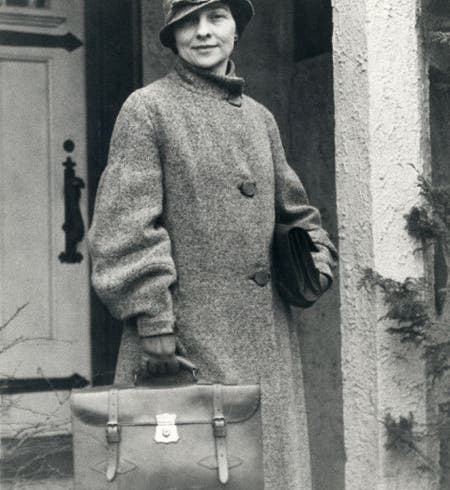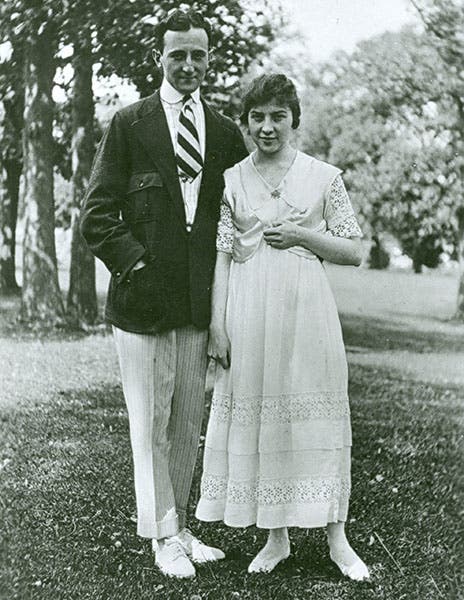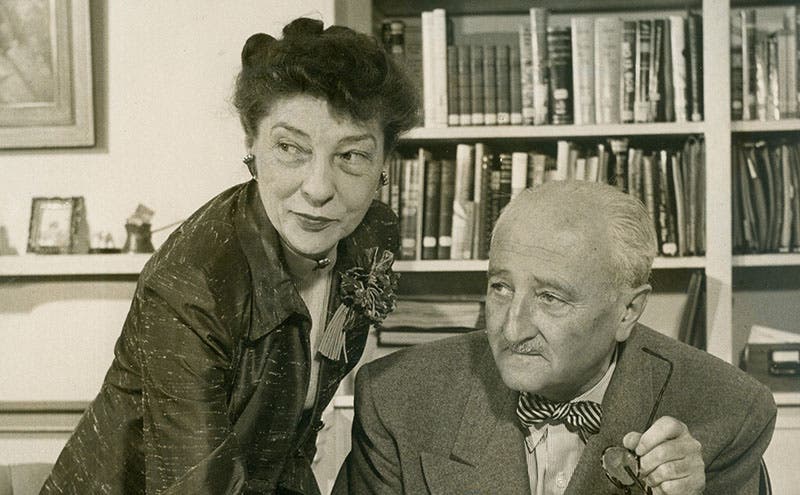Scientist of the Day - Elizebeth Smith Friedman
Elizebeth Smith Friedman, an American cryptanalyst, was born Aug. 26, 1892. Elizebeth was America's first great codebreaker. We will refer to her as Elizebeth is this post, because her husband, William Friedman, was a cryptanalyst as well, so we will avoid referring to anyone as Friedman.
Elizebeth's career as a codebreaker began in 1916, when she was hired by a wealthy eccentric, George Fabyan, to help him uncover a cipher in the first folio of William Shakespeare’s plays, which would prove that the plays were written by Francis Bacon. Elizebeth got the job simply because she was admiring a first folio at the Newberry Library in Chicago and attracted the attention of Fabyan. He owned a large estate called Riverbank in Geneva, Illinois, where he built a large laboratory and patronized scientific investigations of all kinds, including decryption. Elizebeth found, to her surprise, that she was very good at deciphering and decoding. It was at Riverbank that she met William Friedman, a Bessarabian Jew, who was trained in genetics but whose hobby was photography; he took the photographs of the first folio that the decoders worked with. The two hit it off, Elizebeth taught William how to break codes, and within a year, they were married. They also jointly came to the realization that there were no Baconian ciphers in Shakepeare’s first folio.
Fabyan already had a number of cryptoanalysts in his stable when the United States entered World War I, at a time when encrypted radio signals were transforming warfare. Fabyan volunteered the services of his staff to the U.S. Government, and he placed Elizebeth and William in charge. It was the first professional coterie of codebreakers in the world, and Elizebeth showed herself to be a natural, as did William. After the war, the two moved to Washington – William was now in the U.S. Army – where they started to raise a family. Elizebeth thought her code-breaking days were over, but in 1925, the U.S. Coast Guard sought her help in tracking the rumrunners that had proliferated during the era of Prohibition. Elizebeth personally deciphered thousands of encrypted messages, which led to the prosecution and conviction of many organized crime leaders, including Al Capone's brother. Since there was too much traffic for Elizebeth to handle alone, the Coast Guard established a decryption unit with Elizebeth in charge. She would hold that position until the unit was transferred to the Navy at the advent of World War II. The Navy did not allow a woman to have a position of authority over men, and a less-competent male officer was brought in to take charge. Elizebeth kept her job, but it cannot have been a good feeling to lose control over a unit she herself had established.
During World War II, Elizebeth was giving the task of trying to decipher radio traffic between German spies in South America and German U-boats in the Atlantic. The messages were giving U-boats the positions of American and British ships in the Atlantic, and the U-boats were wreaking havoc. The Enigma machine was then in use by the Germans for ciphers, and Elizebeth was able to break the ciphers without even having seen an Enigma machine. She is now credited with saving the Atlantic for the allies and preventing a German front from developing in South America, which would have been disastrous. Unfortunately for Elizebeth, all her decrypted messages were turned over to the FBI, and J. Edgar Hoover gave them agency stamps and then publicly took credit for the deciphering. Since Elizebeth had sworn to the Navy that she would reveal nothing about her work, there was little she could do but chafe, and worry about William, who was showing signs of depression as he too worked under top-secret restrictions and could not talk about his work with anyone, even Elizebeth.
William died in 1969, with some awareness in the public forum that he had done important cryptanalytic work during the war. No one knew about Elizebeth's involvement at all. Her funds ran out, and she died in a nursing home in 1980, a totally unsung hero of the war on organized crime of the Twenties, and of the Battle for the Atlantic during World War II. It was only with the declassification of the war documents in 2008 that word of this remarkable woman codebreaker began to seep out. The seep, thankfully, has become a torrent. There were two biographies of Elizebeth published in 2017, and a book on the more general topic of women codebreakers in 2018. One of the biographies became the basis for a PBS television documentary in the American Experience series, called The Codebreaker, which aired in early 2021 and which I can highly recommend. You may view it here, if you have 53 minutes to spare.
There are two factoids about Elizebeth that her reputation does not really need, but since you are sure to encounter them in any other bio you run across, you might as well read them here first. The strange spelling of Elizebeth’s name is supposedly the result of her mother’s dislike for the nickname Eliza, which was hereby forestalled. And her father was opposed to Elizebeth (or any woman) attending college; when she insisted, he agreed to lend her the money. At six percent interest.
After her death, Elizebeth’s ashes were strewn over William’s grave at Arlington National Cemetery in Washington, D.C. He is identified on the stone as a Lieutenant Colonel in the U.S. Army; she as “beloved wife.” The phrase at the bottom of the stone, “Knowledge is Power,” is a quotation from Francis Bacon, whom they both greatly admired, even if he did not write Shakespeare’s plays.
Dr. William B. Ashworth, Jr., Consultant for the History of Science, Linda Hall Library and Associate Professor emeritus, Department of History, University of Missouri-Kansas City. Comments or corrections are welcome; please direct to ashworthw@umkc.edu.









